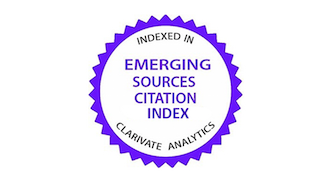Obtención de plantas de girasol silvestre (Helianthus annuus L.) para un bioensayo con herbicidas
DOI:
https://doi.org/10.15517/am.2024.59522Palabras clave:
latencia, semilla, maleza de hoja ancha, prehidratación, polocoteResumen
Introducción. El girasol silvestre o polocote (Helianthus annuus L.) es la principal maleza anual en el cultivo de sorgo y maíz en el norte de Tamaulipas, México. Existe escasa información sobre esta especie para realizar bioensayos con herbicidas. Objetivo. Establecer una metodología para la obtención de plántulas de polocote para bioensayos con herbicidas, desde la semilla hasta la multiplicación en vivero. Materiales y métodos. La semilla de polocote se recolectó en enero del 2023, en el Campo Experimental del Instituto Nacional de Investigaciones Forestales, Agrícolas y Pecuarias (INIFAP), en Río Bravo, Tamaulipas. Después, se ejecutó la prueba de germinación inicial sobre papel filtro y viabilidad con tetrazolio. Se comprobó latencia por baja germinación (12 %) y alta viabilidad (86 %). Se usaron doce tratamientos para romper la latencia, mediante etanol (70 %) y agua (75, 25). Como control se utilizó solamente agua. Los tratamientos se aplicaron a temperaturas de 5 °C y 20 °C, sobre papel filtro, algodón y peat moss, en cajas Petri durante siete días. Posteriormente, se mantuvieron a una temperatura de ±25 °C. Con los resultados anteriores, se estableció la fase de vivero con cuatro esquemas con trasplante de semilla pregerminada y dos con siembra directa. Resultados. El mejor tratamiento para romper latencia fue inmersión en agua a 5 °C por siete días sobre algodón, con una germinación del 73 %. Los mejores métodos para obtener plantas fueron charolas con plántulas y trasplante en macetas negras con 75 % y 50 % de supervivencia, respectivamente. La sombra inhibió el crecimiento de las plantas. La siembra directa, con o sin prehidratación de la semilla, fue desfavorable para la germinación y emergencia. Conclusión. La obtención de plántulas de girasol silvestre fue superior cuando la semilla se sometió a pretratamiento hídrico y trasplante posterior a charolas o a bolsas.
Descargas
Citas
Alejandro Allende, F., García Mata, R., García Sánchez, C., Mora Flores, J. S., & Sangerman Jarquín, D. M. (2020). Competitividad de la producción de sorgo en el norte de Tamaulipas, México. Revista Mexicana de Ciencias Agrícolas, 11(1), 139–150. https://doi.org/10.29312/remexca.v11i1.1914
Baucom, R. S. (2019). Evolutionary and ecological insights from herbicide-resistant weeds: what have we learned about plant adaptation, and what is left to uncover? New Phytologist, 223(1), 68–82. https://doi.org/10.1111/nph.15723
Bentivegna, D. J., Gabriela, G. L., Daddario, J. F. F., & Tucat, G. (2017). Determination of optimal doses of glyphosate for controlling weeds at several stages in southwestern Buenos Aires province (Argentina). Journal of Plant Protection Research, 57(4), 347–354. https://doi.org/10.1515/jppr-2017-0047
Bolaños-Jiménez, J., Uscanga-Mortera, E., Tafoya-Razo, J. A., Kohashi-Shibata, J., & Torres-García, J. R. (2018). Efectividad biológica de herbicidas inhibidores de la acetil coenzima a carboxilasa y acetolactato sintasa y la presencia de resistencia en Echinochloa crus-galli (L.) Beauv. Agrociencia, 52(5), 713–723. https://www.agrociencia-colpos.org/index.php/agrociencia/article/view/1699/1699
Burgos, N. R. (2015). Whole-plant and seed bioassays for resistance confirmation. Weed Science, 63(SP1), 152–165. https://doi.org/10.1614/WS-D-14-00019.1
Burgos, N. R., Patrick, J., Tranel, J., Streibig, J. C., Vince, D. M., Dale, S., Norsworthy, J. K., & Ritz, C. (2013). Review: Confirmation of resistance to herbicides and evaluation of resistance levels. Weed Science, 61(1), 4–20. https://doi.org/10.1614/WS-D-12-00032.1
Castillo, L. E., Pritchard, H. W., & Finch, S. W. E. (2019). Comparison of seed and seedling functional traits in native Helianthus species and the crop H. annuus (sunflower). Plant Biology, 21(3), 533–534. http://doi.org/10.1111/plb.12928
Debaeke, P. P., Pierre, C., Francis, F. L., & Nicolas, B. L. (2017). Sunflower crop and climate change: vulnerability, adaptation, and mitigation potential from case-studies in Europe. Oil and Fat Crops Lipids, 24(1), Article D102. https://doi.org/10.1051/ocl/2016052
Espitia Camacho, M., Cardona Ayala, C., & Aramendiz Tatis, H. (2017). Morfología y viabilidad de semillas de Bombacopsis quinata y Anacardium excelsum. Cultivos Tropicales, 38(4), 75–83.
Gatot, S. S. (2021). Growth pattern of sunflower on some light intensity in the coastal land. Earth Environmental Science, 752, Article 012019. https://doi.org/10.1088/1755-1315/752/1/012019
González, J., Mancuso, N., & Ludueña, P. (2013). Sunflower yield and climatic variables. HELIA, 36(58), 69–76. https://doi.org/10.2298/hel1358069g
Haj, S., Ghaier, A., Khaeim, H., Tarnawa, Á., Kovács, G. P., Gyuricza, C., & Kende, Z. (2023). Germination and seedling development responses of sunflower (Helianthus annuus L.) seeds to temperature and different levels of water availability. Agriculture, 13(3), Article 608. http:/doi.org/10.3390/agriculture13030608
Hsu, P.-C., Hsu, H.-H., Hong, H.-J., Chen, Y.-T., Chen, Y.-L., & Tseng, W.-L. (2022). 2021 Texas cold snap: manifestation of natural variability and a recent warming trend. Weather and Climate Extremes, 37, Article 100476. https://doi.org/10.1016/j.wace.2022.100476
Hulme, P. E. (2023). Weed resistance to different herbicide modes of action is driven by agricultural intensification. Field Crop Research, 292, Article 108819. https://doi.org/10.1016/j.fcr.2023.108819
International Seed Testing Association. (2019). The germination test. In International Seed Testing Association (Ed.). International rules for seed testing (2021 ed., pp. i5-56-64). International Seed Testing Association.
Kutschera, U., & Briggs, W. R. (2016). Phototropic solar tracking in sunflower plants: an integrative perspective. Annals Botany, 117(1), 1–8. https://doi.org/10.1093/aob/mcv141
Laforest, M., & Soufiane, B. (2018). Coevolution of two sulfonylurea-resistant common chickweed (Stellaria media) biotypes with different mutations in the acetolactate synthase gene. Weed Science, 66(4), 439–445. http://doi.org/10.1017/wsc.2018.26
Li, M., Yu, Q., Han, H., Vila-Aiub, M., & Powles, S. B. (2013). ALS herbicide resistance mutations in Raphanus raphanistrum: evaluation of pleiotropic effects on vegetative growth and ALS activity. Pest Management Science, 69(6), 689–695. https://doi.org/10.1002/ps.3419
Mercado, S., Caleño, J., & Rozo, L. (2020). Improvement of the methodology of the tetrazolium test using different pretreatments in seeds of the genus Epidendrum (Orchidaceae). Journal of Seed Science, 42, Article e202042013.https://doi.org/10.1590/2317-1545v42231028
Mercer, K. L., Emry, D. J., Snow, A. A., Kost, M. A., Pace, B. A., & Alexander, H. M. (2014). Fitness of crop-wild hybrid sunflower under competitive conditions: implications for crop-to-wild introgression. PLoSONE, 9(10), Article e109001. https://doi.org/10.1371/journal.pone.0109001
Milivojevic, M., Ripka, Z., & Petrovic, T. (2018). ISTA rules changes in seed germination testing at the beginning of the 21st century. Journal on Processing and Energy in Agriculture, 22(1), 40–45. http://doi.org/10.5937/JPEA1801040M
Montes García, N., Cisneros López, M. E., Díaz Franco, A., Espinosa Ramírez, M., & Álvarez Ojeda, M. G. (2020). Remolacha azucarera (Beta vulgaris L.) como cultivo alternativo en el noreste de Tamaulipas, México: factores agrotecnológicos. Agricultura, Sociedad y Desarrollo, 17(3), 547–568. http://dx.doi.org/10.22231/asyd.v17i3.1371
Nasreen, S., Ayub, K. M., Muhammad, Z., Mehwish, I., Saleem, U. A., & Zarrin, F. R. (2015). Response of sunflower to various pre-germination techniques for breaking seed dormancy. Pakistan Journal of Botany, 47(2), 413–416. https://www.researchgate.net/publication/275045378
Ofosu, R., Evans, D., Agyemang, A., György, P., János, T., & Gabriella, K. (2023). Herbicide resistance: managing weeds in a changing world. Agronomy, 13(6), Article 1595. https://doi.org/10.3390/agronomy13061595
Panozzo, S., Scarabel, L., Collavo, A., & Sattin, M. (2015). Protocols for robust herbicide resistance testing in different weed species. Journal of Visualized Experiments, 101, Article 52923. https://doi.org/ https://doi.org/10.3791%2F52923
Pérez, P. L. (2018). ¿Cómo proceder ante el incumplimiento de las premisas de los métodos paramétricos? o ¿cómo trabajar con variables biológicas no normales? Revista del Jardín Botánico Nacional, 39, 1–12. https://www.researchgate.net/publication/327752027
Reséndiz Ramírez, Z., López Santillán, J. A., Briones Encinia, F., Mendoza Castillo, M. del C., & Varela Fuentes, S. E. (2014). Situación actual de los sistemas de producción de grano de maíz en Tamaulipas, México. Investigación y Ciencia, 22(62), 69–75.
Rivero Aragón, A., & Grillo Ravelo, H. (2018). Fenología de la interacción girasol- Homoeosoma electellum Hulst. para el desarrollo de estrategias de control. Idesia, 36(4), 81–86. https://dx.doi.org/10.4067/S0718-34292018005002602
Rosales-Robles, E., Sánchez-de la Cruz, R., & Cerda-García, P. A. (2011). Control químico de maleza de hoja ancha en sorgo para grano. Revista Fitotecnia Mexica, 34(4), 269–275. http://dx.doi.org/10.35196/rfm.2011.4.269
Ruíz, B. M., & Parera, C. A. (2013). Efecto del estrés hídrico y salino sobre la germinación de Atriplex nummularia (Chenopodiaceae). Acta Biológica Colombiana, 18(1), 99–106.
Salazar, S., Botello, H., & Quintero, J. (2019). Pre-treatments effect on the tetrazolium test on Epidendrum barbaricum Hágsater and Dodson seeds. Acta Agronómica, 68(4), 306–311. https://doi.org/10.15446/acag.v68n4.79619
Sarmiento-Muñoz, T., Alanís-Rodríguez, E., Mata-Balderas, J. M., & Mora-Olivo, A. (2019). Estructura y diversidad de la vegetación leñosa en un área de matorral espinoso tamaulipeco con actividad pecuaria en Nuevo León, México. CienciaUAT, 14(1), 31–44. https://doi.org/10.29059/cienciauat.v14i1.1001
Seiler, G. J. (2022). Germination and viability of wild sunflower species seeds stored at room temperature and low humidity for 38 years. Seed Science and Technology, 50(3), 307–315. https://doi.org/10.15258/sst.2022.50.3.01
Seiler, G. J., Lili, L., Qi, L. L., & Marek, L. F. (2017). Utilization of sunflower crop wild relatives for cultivated sunflower improvement. Crop Science, 57(3), 1083–1101. https://doi.org/10.2135/cropsci2016.10.0856
Singh, V., Etheredge, L., Mcginty, J., Morgan, G., & Bgavathiannan, M. (2020). First case of glyphosate resistance in weedy sunflower (Helianthus annuus). Pest Managment Science, 76(11), 3685–3692. https://doi.org/10.1002/ps.5917
Singkaew, J., Miyagawa, S., Wongs-Aree, C., Vichitsoonthonkul, T., Sokaokha, S., & Photchanachai, S. (2017). Season, fruit maturity, and storage affect on the physiological quality of F1 hybrid ‘VTM580’ tomato seeds and seedlings. The Horticulture Journal, 86(1), 12–131. https://doi.org/10.2503/hortj.MI-087
Struve, D. K. (2009). Tree establishment: a review of some of the factors affecting transplant survival and establishment. Arboriculture and Urban Forestry, 35(1), 10–13. http://dx.doi.org/10.48044/jauf.2009.003
Székács, A. (2021). Herbicide mode action. In R. Mesnage, & J. G. Zaller (Eds.), Herbicides: chemistry, efficacy, toxicology, and environmental impacts (pp. 41–86). Elsevier publishing. https://doi.org/10.1016/C2019-0-04861-3
Thompson, C. R., Dille, A., & Peterson, D. E. (2019). Chapter 15. Weed competition and management in sorghum. In I. A. Ciampitti, & P. V. Vara Prasad (Eds.), Sorghum, A State of the Art and Future Perspectives (pp. 347–360). Crop Science. https://doi.org/10.2134/agronmonogr58.c15
Toca, A., Moler, E., Nelson, A., & Jacobs, D. (2022). Environmental conditions in the nursery regulate root system development and architecture of forest tree seedlings: a systematic review. New Forests, 53, 1131–1143. http://dx.doi.org/10.1007/s11056-022-09944-8
Warrick, B. E. (n. d.). Sunflower production guide. Texas A&M Agrilife Extention. Retrieved August 17, 2023. https://sanangelo.tamu.edu/extension/agronomy/agronomy-publications/sunflower-production-guide/

Archivos adicionales
Publicado
Cómo citar
Número
Sección
Licencia
Derechos de autor 2024 Ma. Eugenia Cisneros-López , Miguel Ángel Valdez-Hernández, Flor Elena Ortiz-Chairez, Martín Espinosa-Ramirez, Rubén Darío Garza-Cedillo, Marisol Galicia-Juarez

Esta obra está bajo una licencia internacional Creative Commons Atribución-NoComercial-SinDerivadas 4.0.
1. Política propuesta para revistas de acceso abierto
Los autores/as que publiquen en esta revista aceptan las siguientes condiciones:
- Los autores/as conservan los derechos morales de autor y ceden a la revista el derecho de la primera publicación, con el trabajo registrado con la licencia de atribución, no comercial y sin obra derivada de Creative Commons, que permite a terceros utilizar lo publicado siempre que mencionen la autoría del trabajo y a la primera publicación en esta revista, no se puede hacer uso de la obra con propósitos comerciales y no se puede utilizar las publicaciones para remezclar, transformar o crear otra obra.
- Los autores/as pueden realizar otros acuerdos contractuales independientes y adicionales para la distribución no exclusiva de la versión del artículo publicado en esta revista (p. ej., incluirlo en un repositorio institucional o publicarlo en un libro) siempre que indiquen claramente que el trabajo se publicó por primera vez en esta revista.
- Se permite y recomienda a los autores/as a publicar su trabajo en Internet (por ejemplo en páginas institucionales o personales) antes y durante el proceso de revisión y publicación, ya que puede conducir a intercambios productivos y a una mayor y más rápida difusión del trabajo publicado (vea The Effect of Open Access).























